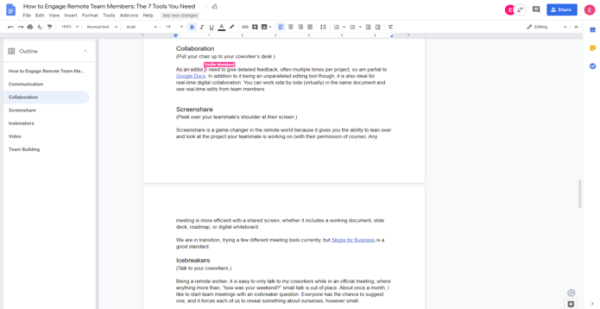I work in an office down the hall from my bedroom. You can’t beat the commute or the proximity to my family. I wouldn’t want it any other way. And I’m not the only one.
Regular work-from-home employment (not self-employment) has grown 173% since 2005. And 3.4% of the workforce works from home at least half of the time, according to data posted by Global Workplace Analytics.
This fast rate of growth doesn’t seem likely to slow if employers listen to their employees. In Buffer’s 2019 State of Remote Work study, a resounding 99% of respondents said they wanted to work remotely at least part of the time for the rest of their career.
99% say they want to work remotely at least part time for the rest of their career @Buffer research via @cmicontent. Click To Tweet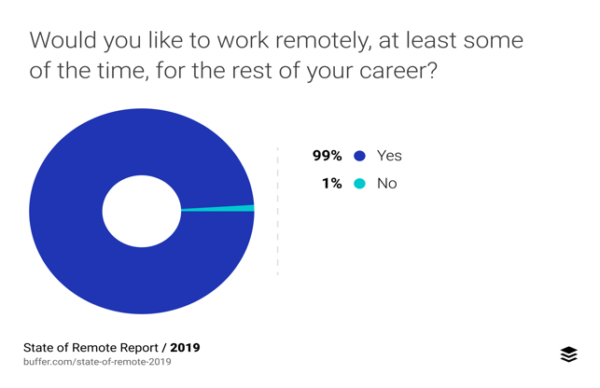
99%?! This is serious.
So what’s the problem with the growth in working remotely?
It’s changing the way the workplace operates and that requires changing the way employers operate. My content team works across the United States and the world, but we need to operate as if we were in the same room. Thus, we have to expand our tool options to get the work done.
Your content marketing team may have similar remote challenges. The designer can’t pop by a writer’s desk to ask a question about content for an infographic. At the production meeting, you don’t all sit in front of the same whiteboard with the timeline and tasks. You can’t gather around the conference room to brainstorm ideas. And when creative frustration or writer’s block hits, you can’t take a break together and go grab a coffee.
Yet, remote content team members do not work robotically. We are still human. The voice on the other side of the conference call wants to feel heard just as much as the one in the chair next to you. Add in the fact that many creative professionals identify as introverts, to whom speaking up on a crowded conference call doesn’t come naturally, and it is easy for many to get lost or hide behind a phone line.
In the Buffer survey, two of the top three struggles cited by remote employees are loneliness and communication/collaboration issues.
Loneliness and communication/collaboration issues are top struggles by remote employees according to @Buffer research via @cmicontent. Click To Tweet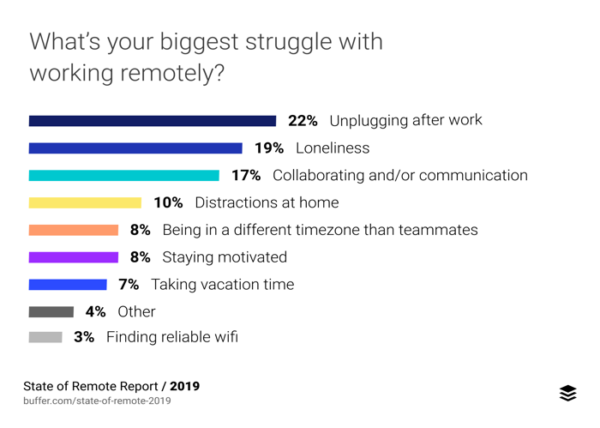
To keep your content marketing team happy, productive, and successful – and to attract the best talent – you need to address the areas where remote teams can easily struggle. While you may have many of the available tools at your disposal, you most likely aren’t using them regularly. You owe it to your team to try these out.
Let’s tackle the three biggest topics – organization, communication, and collaboration.
HANDPICKED RELATED CONTENT:
Organization: Create and track a plan for your work
The need for organizing your content team’s work is nothing new. But working in multiple cities and time zones makes it even more important to keep everyone on the same page with each ongoing content initiative.
A workflow tool like Asana (a favorite of mine and many content marketing teams) keeps tabs on ongoing projects. Built for the marketing industry, it makes sense for the way content marketing projects flow.
.@Asana makes sense for the way #contentmarketing projects flow, says @writtenbyemilie via @cmicontent. #tools Click To TweetAs complex as its functionality is, it is still user friendly. You can view projects in a list, or on a board, calendar, or timeline, with one click. It allows you to organize projects into teams so only those who need to see them do. You can, of course, track the status, show blockers, comments, deadlines, and more, that can be seen by all team members. Asana also integrates with other tools like Google Docs, Slack, and Litmus.
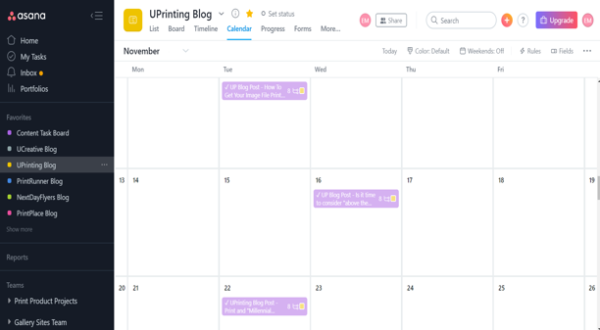
HANDPICKED RELATED CONTENT:
Communication: Gather around the watercooler
Continuous communication among your content marketing team members is something everyone needs. While email technically provides that opportunity, it communicates a formality and is not suited to a single question or group conversation with a lot of back and forth.
What about when you just want to (virtually) lean over to your co-worker’s desk to ask, “Hey, what do you think of this subject line?” Enter: Slack.
Slack is by far the favorite chat platform among modern marketing teams, and the format allows for both one-on-one chats and group conversations.
.@SlackHQ is the favorite chat platform among #marketing teams, and the format allows for both 1 on 1 chats and group convos, says @writtenbyemilie via @cmicontent. #tools Click To TweetYou can also set up different channels for groups and topics. At one of my employers, we had a “Have You Seen This?” channel for sharing favorite Content Marketing Institute articles, Ann Handley newsletters, and news from Searchmetrics on the latest Google algorithm update. We also had a “Watercooler” channel that allows for discussions around pets, lunch, or a current event, allowing us to get to know each other outside of formal meetings.

Icebreakers
Being a remote worker, it is easy to only talk to my co-workers in official meetings, where anything more than “how was your weekend?” is out of place. About once a month, I like to start my content team meetings with an icebreaker question. Everyone can suggest one, and it forces each of us to reveal something about ourselves, however small:
- “What is your favorite content marketing blog?”
- “When did you know you wanted to be a writer?”
- “What non-work-related book are you currently reading?”
- “What is your favorite food?”
Lucid Meetings went beyond the typical icebreaker questions and made a list of icebreaker activities for remote teams. One is “take a picture of your shoes.” The resulting collage of six photos is amusing. It led to bare feet, slippers, and other unexpected surprises that the usual waist-up video visual doesn’t catch. I may have to try this one with my own team. (It’s also a great way to set the stage for great brainstorming or creative sessions.)

Collaboration: Pull up a chair to your co-worker’s desk
As an editor, I need to give detailed feedback, often multiple times per project, so I am partial to Google Docs. An unparalleled editing tool, it is also ideal for real-time digital collaboration for a content team. You can work side by side (virtually) in the same document and see real-time edits from other team members.
HANDPICKED RELATED CONTENT:
Screen sharing
Screen sharing is a game-changer in the remote world because it gives you the ability to lean over and look at the project your teammate is working on (with their permission of course). Any meeting is more efficient with a shared screen, whether it includes a working document, slide deck, road map, or digital whiteboard.
I’m trying a few virtual meeting tools currently, but Skype for Business is a good standard.
Video
A person’s tone of voice tells you a lot, but not as much as facial expressions and body language. Using video for meetings, even on occasion, helps any content marketing team to connect better. Each voice becomes a person.
Be sure to warn attendees in advance. Remote workers tend to take full advantage that they work in their house, so a shower and hairbrush may need to be scheduled ahead of a video call.
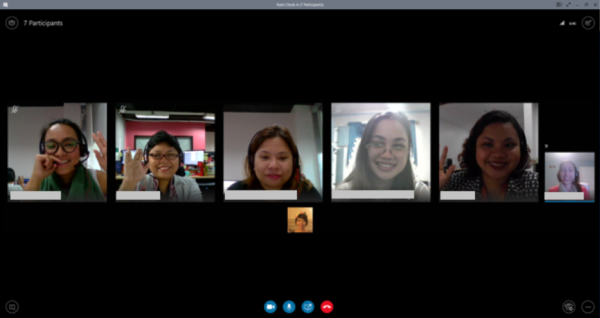
Team building
Still, nothing replaces face-to-face conversations. We still crave real, human interactions. In-person team-building events and meetups at least a couple of times throughout the year are helpful in creating a close team.
For teams that find it is tough to coordinate or too expensive, there is a company trying to do something about it. Remo.co created virtual happy hours where teams can hang out in rooms designated for activities like a book club or casual conversation.
Use a virtual workspace tool such as @use_remo for remote and distributed teams that want real-time collaboration, says @writtenbyemilie via @cmicontent. #tools Click To TweetIt also could work as a multi-team-building activity for companies. For remote content marketing teams that want to strengthen their connection with their sales or product teams, they can set up an event with Remo. Then even though the teams aren’t together in person, they can participate in team-building activities and play online games together. (Full disclosure: I haven’t tried this one out, so if you do, let me know how it goes.)
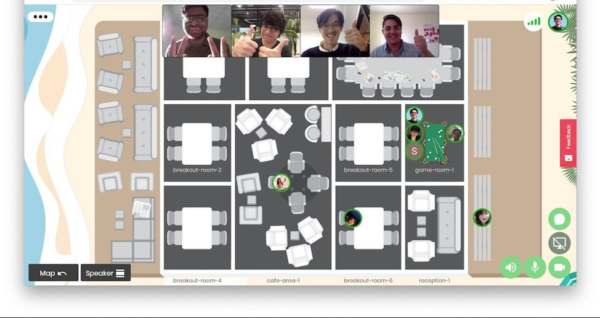
Organize, communicate, collaborate
Working remotely definitely has its advantages, but it’s how your content marketing team addresses the disadvantages that will predict your long-term success.
If you address three of the biggest pitfalls – organization, communication, and collaboration – with tools available, your content marketing team will find itself happily working from the same page to deliver outstanding results for your company and your audience.
What other tools do you use and what practices do you follow to create a fulfilled remote team? Share them in the comments.
HANDPICKED RELATED CONTENT:
Please note: All tools included in our blog posts are suggested by authors, not the CMI editorial team. No one post can provide all relevant tools in the space. Feel free to include additional tools in the comments (from your company or ones that you have used).
Cover image by Joseph Kalinowski/Content Marketing Institute


